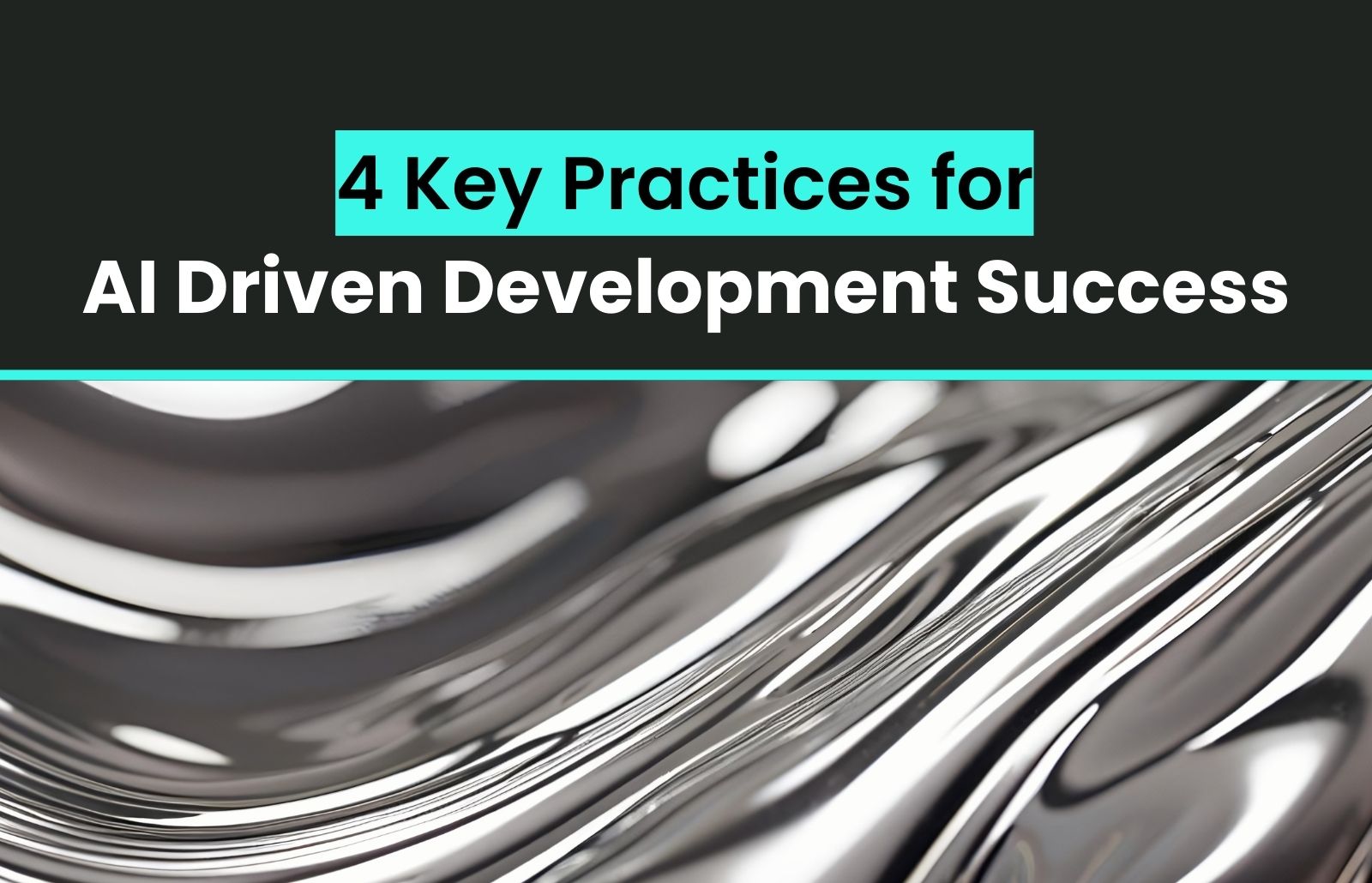In the rapidly evolving landscape of artificial intelligence, success or failure often hinges on strategic practises that guide development. Establishing clear objectives, implementing robust data strategies, designing effective models, and continuously monitoring performance are critical steps that organisations must undertake to unlock the full potential of their AI initiatives. Despite this, over 85% of AI projects fall short of expectations. Therefore, it is imperative to identify the essential practises that ensure alignment and effectiveness in AI-driven development.
1. Define Clear Objectives for AI Projects
To achieve success in AI driven development, it is essential to start with clear, measurable objectives. This involves identifying specific problems that AI can solve or opportunities it can enhance. For instance, a fintech company might aim to reduce fraud detection time by 50% using AI algorithms. By articulating these goals, teams can prioritise tasks, allocate resources effectively, and measure progress. Moreover, involving stakeholders from different departments during the objective-setting phase ensures that the AI initiative aligns with broader business strategies, fostering buy-in and support across the organisation.
However, businesses may encounter challenges when implementing AI agents, such as delays in response time, which can frustrate customers and lead to churn. To overcome these challenges, leveraging AI agents effectively is crucial, as they can provide instant replies, significantly improving customer experience and satisfaction. Notably, more than 85% of AI initiatives fail to meet business expectations, highlighting the essential requirement for clearly defined goals in AI driven development. As Mickey McManus, a Senior Advisor at BCG, aptly states, “Success is 70% people and ways of working and only 30% technology.” This underscores the importance of collaboration and alignment in achieving successful AI outcomes.
2. Implement Robust Data Collection and Preparation Strategies
Efficient information gathering and preparation are paramount to the success of AI projects. Organisations must establish rigorous protocols for collecting information from diverse sources, ensuring that the data is both relevant and representative of the issues at hand. By leveraging cloud-based solutions, such as AWS AI/ML services, organisations can enhance scalability and accessibility. This approach allows for a pay-as-you-go model, which effectively mitigates the need for substantial upfront investments in costly hardware and software.
Furthermore, the phases of information cleaning and preprocessing are critical for eliminating inaccuracies and biases. For example, a medtech firm developing an AI diagnostic tool must ensure that the training data encompasses a wide range of patient demographics to prevent biased outcomes. Regular audits of data quality and adherence to regulations, such as GDPR, are essential for maintaining trust and integrity within AI systems.
By harnessing automation and self-service capabilities, organisations can optimise their operations, ensuring resilience and efficiency in their AI driven development initiatives.
3. Design and Train Effective AI Models
Designing and training effective AI models is essential for AI-driven development and demands a strategic approach that aligns with organisational objectives. The selection of appropriate algorithms is paramount, especially for tasks such as classification, regression, or clustering. For instance, a logistics company seeking to optimise delivery routes can gain significant advantages by employing reinforcement learning algorithms.
Moreover, training models on diverse datasets is essential, as it greatly enhances their capacity to generalise and perform effectively in real-world applications. Regular updates and retraining of models with new data are critical for adapting to evolving conditions and improving performance over time.
Additionally, leveraging cloud-based platforms can streamline this process, offering the computational power and resources necessary for successful AI-driven development.
4. Monitor and Evaluate AI Performance Continuously
To ensure the effectiveness of AI systems, organisations must establish robust continuous monitoring and evaluation processes. This begins with defining key performance indicators (KPIs) that align with the initial objectives of the AI project. For instance, a telecom company may track customer satisfaction scores following the implementation of an AI-driven customer service chatbot. Regularly reviewing these metrics enables teams to pinpoint performance gaps and make informed, data-driven decisions for optimization.
Moreover, entities should establish feedback mechanisms to integrate user perspectives, enabling essential adjustments to AI systems. This proactive approach not only enhances performance but also builds trust among users and stakeholders, which is crucial for long-term success. Industry experts emphasise that effective KPI tracking is essential, with 80% of organisations recognising the need for clear metrics to gauge AI project success.
By embedding these practises into their AI strategies, companies can navigate the complexities of AI implementation while maximising their return on investment through AI-driven development.
Conclusion
In the realm of AI-driven development, success hinges on a structured approach that encompasses clear objectives, robust data strategies, effective model design, and continuous performance evaluation. Establishing specific, measurable goals at the outset lays the groundwork for aligning AI initiatives with broader business strategies, ensuring that all stakeholders are engaged and invested in the outcomes. This foundational step not only prioritises tasks but also facilitates effective resource allocation and progress measurement.
The critical importance of data collection and preparation cannot be overstated; the quality and relevance of data directly impact the efficacy of AI systems. By implementing rigorous data protocols and leveraging cloud-based solutions, organisations can enhance their scalability and operational efficiency. Furthermore, the design and training of AI models must be strategic, utilising appropriate algorithms and diverse datasets to ensure adaptability and long-term success. Continuous monitoring and evaluation of AI performance through well-defined KPIs and user feedback mechanisms are essential for identifying areas for improvement and maintaining stakeholder trust.
Ultimately, the journey towards successful AI development is multifaceted, requiring a commitment to best practises at every stage. Organisations are encouraged to embrace these strategies, not merely to overcome the common pitfalls associated with AI implementation but also to unlock the full potential of their AI initiatives. By prioritising clear objectives, high-quality data, effective model training, and ongoing performance evaluation, businesses can drive innovation and achieve meaningful results in an increasingly competitive landscape

